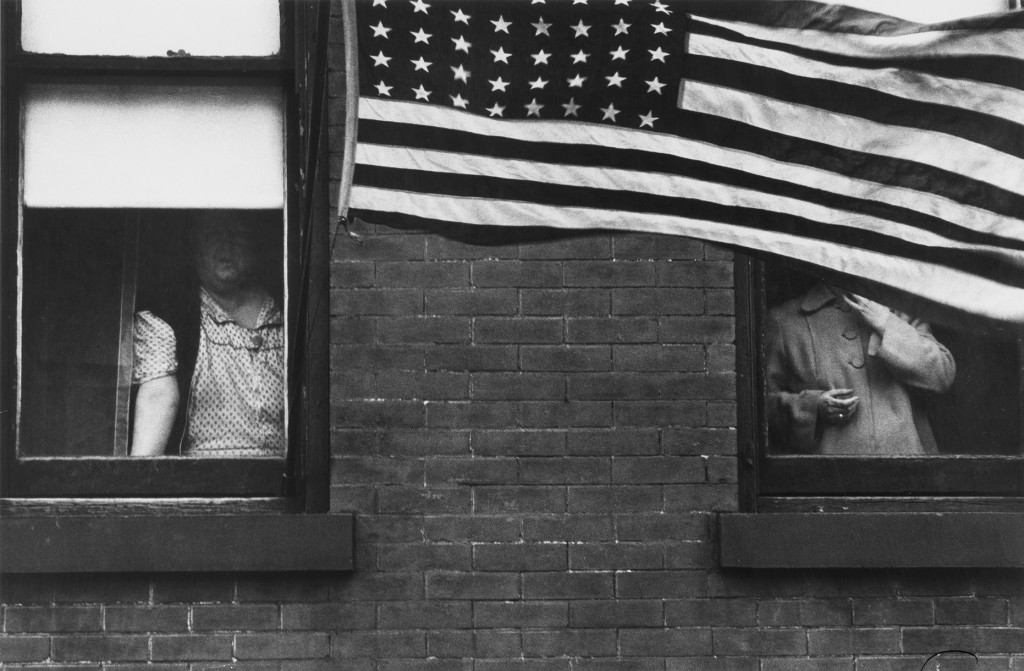Working in the Closet: The stunning works of Vivian Maier
Vivian Maier, New York, 1954
Maybe you haven’t heard about Vivian Maier yet. The story goes like that: As a nanny, Vivian Maier worked for different families in the 1950s and 1960s, mainly in Chicago and New York. That was her official profession. Shortly after her death in 2009 John Maloof, an amateur historian, bought some boxes of unknown content in hope of finding some relevant material for a local history project. What he discovered when he unpacked the boxes was what every art historian dreams of: Thousands of photo negatives which could easyly compete with the most iconic street photographers in that times. It was quite a big deal and so many questions aroused: Why didn’t she tell anyone about the photos? Why didn’t she develop the negatives? Why did she make such a secret of it? In fact she took the photos and just stored them her room. It’s quite probable that she didn’t even SEE most of the photos as we can today because she didn’t develop them.
Documentaries on Vivian Maier
There are some documentaries about Vivian Maier. One is “Finding Vivian Maier” from John Maloof, the other one is “Who took nanny’s pictures” from the BBC archive. Although I must say that John Maloof’s documentary to me seems to be like kind of a commerical about Vivian Maier and I am sure that the film contributed a lot to John Maloof’s success in spreading the news about his discovery. But if you want to hear the story “first hand” it’s nice to be told by Maloof himself. The New York Times reported about Maier, many newspaper did.
The photos
Within all this I was asking myself: Why is it actually that we would say her photos are brilliant, outstanding? Why are they exhibited in galleries and in museums throughout the world meanwhile? Bluntly asking: What is it that makes her photos so outstanding? Having that in mind, let’s have a look at her above photo:
Looking disdainfully towards us the white boy is leaning his arm on his knee as if to say: “Get away!” But we can’t. So we are watching the following scene: A black boy is kneeing in front of the white boy whose left shoe is waiting to be cleaned by the lower positioned one. At second sight we see a man sitting at the end of the shopping window in exactly the same pose: Shoe standing on a bench and holding his arm in the same way as the young boy does in the foreground. Immediately one might think: Like the father, like the son? It makes you reflect what is happening in the picture. That is one of the fascinating things about Maiers’ photos: When you look at her photos you come up with questions then can’t be explained within the context of the photo. It makes you think about society and how unequal things are. Her photos are a social comment. If we look at the young boy’s expression we could wonder why he looks so disgusted. Or is it us that IS disgusted by what we see?
Maier is not refraining to take photos on controversial topics. Her photos can be read as comments and as a critique. She turns her camera towards things that people usually turn away from. In that regard similarities can be drawn to Robert Frank’s “The Americans”. But what it makes all more complicated is, that we cannot even say she criticized society because she didn’t develop the photos. That leaves us again with a question: Why was she doing all this if not to SHOW people? As the Hamburg art historian Wolfgang Kemp stated she knew well about contemporary photography and that she could have get professional advice if she wanted to. However, Maier still preferred not to develop the negatives. In her photos she shows such a precision and perfection in composition and such a security in how to come to the essence of what makes the photo outstanding that you can call her photos “merciless”[1]. Merciless because they have no pitty. Merciless because they still have this perfect composition. The photos are just taken for the sake of being taken. Merciless because they don’t aim at improving the situation.
If you have the time, go and check out the website from John Maloof to explore more of her works. You’ll be surprised.
[1] Wolfgang Kemp, FAZ, 2011.
source of photo: http://www.vivianmaier.com/gallery/street-2/#slide-12




